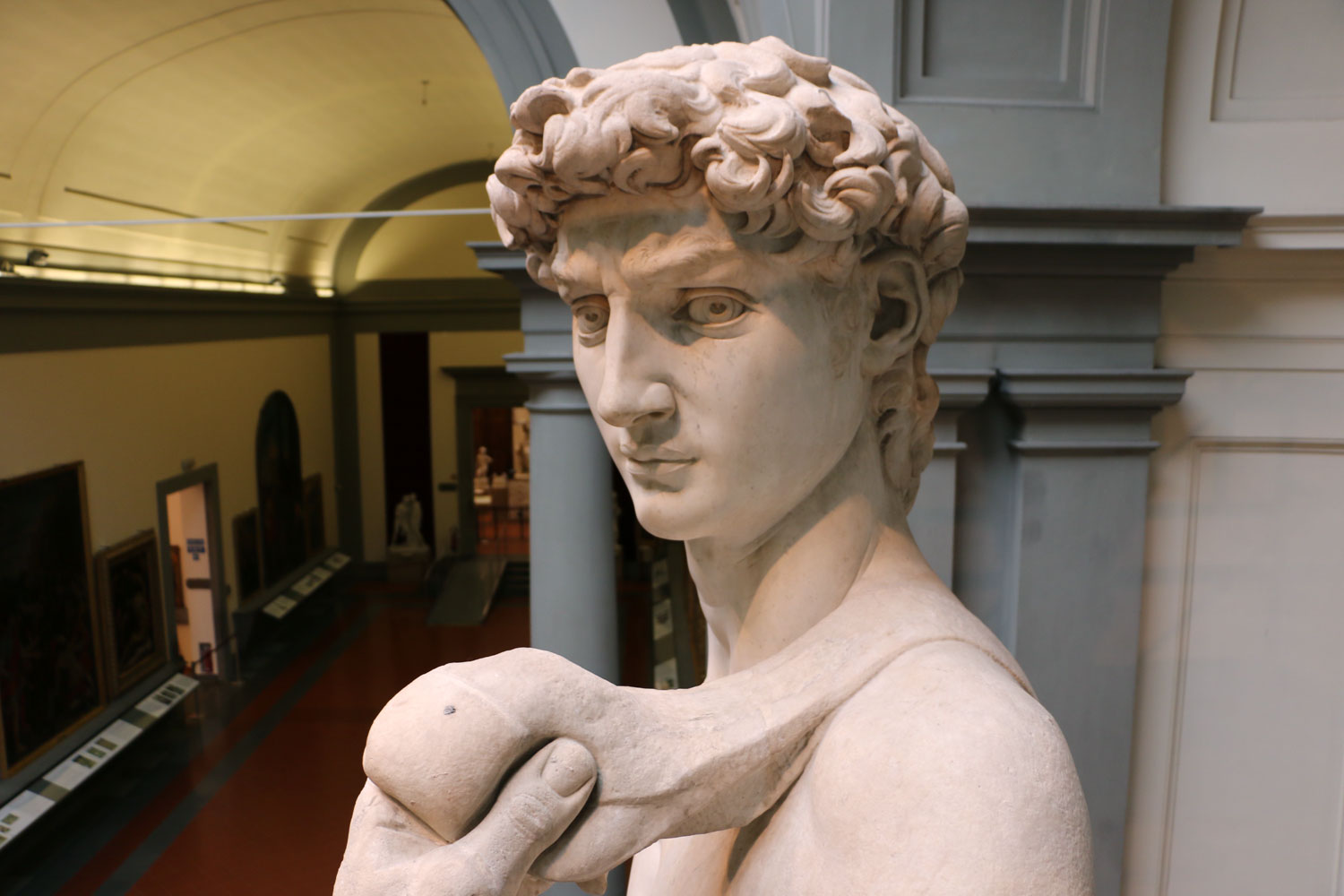David to go to Dubai
2021

Not the real David by Michelangelo, but a 3D copy!
Captured by the flashes of nearly two million tourist cameras each year, Michelangelo’s David has been scanned to produce the most faithful and sophisticated reproduction of the statue ever made.
The copy of the Renaissance masterpiece, which was unveiled yesterday in Florence, will star at Dubai’s rescheduled Expo 2020 this October.
The unique challenge, involving a team of engineers, technicians, and restorers, combines classical art with the most advanced technologies.
The 3D David will stand at the center of Italy’s Expo pavilion, admired by the world, while the original stands in solitary silence at the Galleria dell’Accademia museum in Florence as the museum remains closed due to regional coronavirus measures as the city remains in the “red zone”.
The project, which began several months ago, underwent three phases: the scanning of the statue to create a three-dimensional digital twin, the 3D printing of the various parts, and the refining and assembling of those parts by restorers.
In the first phase, which took place at the end of December, the statue was scanned centimeter by centimeter. No easy task since it’s more than five meters high.
Every detail had to be captured with instruments that have a margin of error in the order of microns, thinner than a strand of hair. Instruments usually associated with the industrial field – such as scanners used to check prototypes of wind turbines – were used for the first time in the world of art.
Researchers from the University of Florence collaborated with technicians from Hexagon, a Swedish multinational company that specializes in precision measurement technology. It took over 40 hours to scan the statue using a tracer combined with a laser.
Experts then used a projector that illuminates the surface of the statue and two high-resolution cameras to capture the details as closely as possible.
It’s actually not the first time that David has been digitized. In 1999, a group of scholars from Stanford University carried out a three-dimensional scan of the famous sculpture.
This time, the sculpture was digitized “with a very high level of accuracy, I would say twice as high as the Stanford model made twenty years ago”, says Grazia Tucci, director of the Laboratory of Geomatics for the Environment and the Conservation of Cultural Heritage at the University of Florence, who is coordinating the project.
It’s thought the digital twin will be useful for future research on the statue, making it possible to constantly monitor the state of conservation of the work and the behavior of the surfaces, materials and structures.
After scanning, then came the printing. This time, David’s legs, arms, torso, and head weren’t brought to life by Michelangelo, who skillfully carved him from Carrara marble over five hundred years, but by a 3D printer, which took just a few days to create a copy out of plastic filaments.
The most delicate phase of all was just completed in a small workshop in the center of Florence involving a team of expert restorers, some of whom come from the Opificio delle Pietre Dure (Workshop of Semi-Precious Stones), one of the world’s most important institutes for the conservation and restoration of art.
To fully resemble the original made of marble, which has a completely different aesthetic and structural characteristics to the printed version, the copy must undergo a “make-up” session to add the finishing touches.
Restorers have coated the copy with a mixture of resin and marble powder, as if applying skin, while constantly comparing images of the original with parts they’re working on.
“We are covering it in stone first of all, to give it the appearance of Michelangelo’s David, and then to characterize it, we need to render on the surface those cracks, fractures, stains, abrasions, the more or less smooth parts, to give a soul to what is in reality a copy that has been transformed from digital into physical matter,” says Nicola Salvioli, who heads the group of restorers.
The clone of David emerged in one piece from the laboratory, lying in a special crate to be delicately transported by air to the UAE.
While no one involved in the project has dared imagine they’re competing with Michelangelo – “that’s unthinkable”, as Salvioli says – they have relished rising to a series of never-before-seen challenges.
“The challenge here is, being a pilot project, a pilot model, to bring together all these materials, all these technologies through chemistry, physics, and hard work, because our eyes and hands are always under pressure,” says Salvioli.
“The difficulty is thinking about moving the statue bearing in mind the static nature of the materials and thinking about the temperatures that this sculpture will encounter, because it will go from the cold of the plane to the heat of Dubai.”
While its twin dazzles at Dubai’s Expo, the original David will be waiting for the return of over 1.5 million visitors who visit Florence’s Accademia Gallery every year from all over the world before the coronavirus pandemic hit.
“He will go as a messenger, we will send him as a messenger, to the Expo in Dubai, this October when it opens,” says Cecilie Hollberg, director of the Galleria dell’Accademia.
“And he will show us how to go on in this period, but the original always will stay here and we will keep him in this museum, and we expect visitors again, after all these strange times we’re living in.”
The Tuscan artist’s masterpiece is one of the emblems of the Renaissance, a symbol abroad for both Florence and Italy.
It depicts the protagonist of one of the most famous episodes in the Bible: the shepherd David who, armed with a simple sling, killed Goliath, a fearsome giant who was at war with the people of Israel.
Two other artists had already tried to work on this large block of poor-quality marble, but Michelangelo Buonarroti, aged only 26, succeeded where they had failed.
The result so exceeded expectations that the statue, originally intended to stand on one of the outer buttresses of the cathedral of Santa Maria del Fiore, was placed in the central Piazza della Signoria where it remained until 1873 to be replaced by a copy.
Considered the ideal of masculine beauty in art, and a symbol of faith and courage triumphing over brute violence, it represents hope for a better and safer future. A message we all clearly need in today’s pandemic-hit world. Read more about David here.












